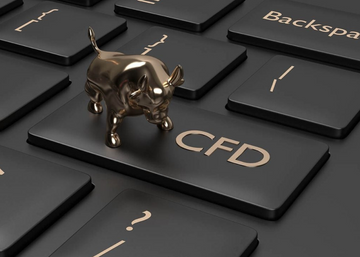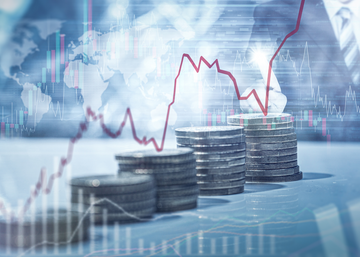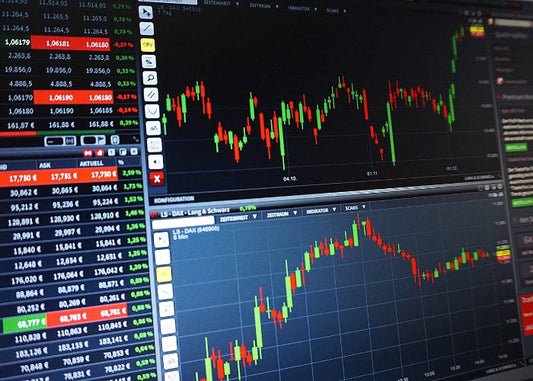What is a CFD and how can I trade it?

CFDs stand for Contracts for Difference. With these derivative products, investors can participate in the performance of various markets or underlyings such as stocks, currencies, indices, or commodities. In this case, the underlying assets are not bought or sold, but a CFD relates to the underlying asset. By trading a CFD, one enters into a contract on the difference in the value of the transaction between the time of purchase and sale. An important feature of CFDs is that they can be traded in both directions - rising and falling prices of an underlying The success of a trade depends on whether the predicted direction comes true.

Short and long trading
With CFDs, profits can therefore also be made in falling markets. If you want to profit from falling prices, you position yourself "short". For example, someone who shorts the Apple stock at a price of $150 buys a short CFD that profits from every dollar the stock fall from that level. Conversely, the trade loses value as soon as the stock rises. The gains and losses are proportional. The profit at 140 dollars is the same as the loss at 160 dollars. The difference in value to the initial value is 10 dollars in each case. However, the profits and losses are realized only when the position is closed.

Leverage
An important feature of a CFD trade is leverage. This makes it possible to trade a higher value than capital investment. If you want to buy 10 Apple shares at 150 dollars, you have to raise 1,500 dollars per share. With CFDs, it is sufficient to deposit a so-called margin, which is often 20 percent. For example, it would be possible to trade the equivalent of 50 Apple shares with the same 1,500 dollars and accordingly trade 50 CFD contracts on the Apple share. Or to put it another way, the leverage in this trade is 5 because in this example 20 percent, or $300, must be deposited to move a $1,500 position. If the Apple price rises from 150 to 165 dollars (+10 percent), the long CFD gains 50 percent: 10 Apple CFD shares times 15 euros per share results in 150 euros profit. Compared to the capital investment of 300 euros, the profit will be 50 percent.
Of course, profit and loss can change more significantly. The losses can reach the deposited margin, making it necessary to deposit further capital into the trade or to close the trade and realize the loss. For this reason, it is important to pay attention to the leverage effect and make sure that the trade stays within the limits.

Margin
This is why CFD trading is also known as margin trading. The initial margin deposited is the margin required to open the trade. If the trade enters an undesirable direction, it may be necessary to make an additional margin payment - also known as a "additional margin": When you receive a notice or call from the broker to deposit additional funds into the trade to prevent a forced closing.
Spread
When trading CFDs, investors must pay attention to the spread, similar to stock trading. This refers to the difference between the buying and selling price, also known as the bid and ask price. When selling, one receives the bid price, when buying, one pays the ask price. The difference depends on the underlying asset. For currencies such as Euro/US Dollar or popular indices such as the DAX or the Nasdaq 100, the spreads are often very small. For exotic commodities or exotic stocks, the spreads can be higher.
Lot
The term lot is often used in CFD and Futures trading and simply refers to "quantity". It refers to how much of an underlying asset you "move" with a CFD, i.e. the contract size. It is therefore important to check what quantity the CFD refers to, i.e. what amount the CFD contract covers, before buying a CFD for the respective underlying. The smallest contract size is also called "mini". In the case of the DAX, 1 lot refers to 1 DAX-CFD at the current price converted into euros. At a level of 13,000 points, one lot then represents 13,000 euros. A mini lot is 10 percent of that or 1,300 euros. Minis are often used because the margin is lower. For other underlyings, the reference values change. In the case of the euro-dollar exchange rate, a CFD contract refers to 100,000 euros.

Pips
As just described, the value of a point or pip, which is the smallest price change in the CFD, is 1 euro in the DAX. If the DAX rises from 13,000 points to 13,100, the CFD has gained 100 pips. If you trade a mini lot, you trade one-tenth of that, which is 0.1 pips. In the previous example, the mini DAX rises by 10 Euros.
Overview: CFD investments
- With CFDs, investors can trade with leverage on rising and falling prices.
- Margin is the security deposit when trading CFDs and allows you to trade
- When trading CFDs pay attention to the contract sizes (lot) and the value of the smallest tradable unit (pips)
No comments
Home
Trive
TriveHub





0 comments